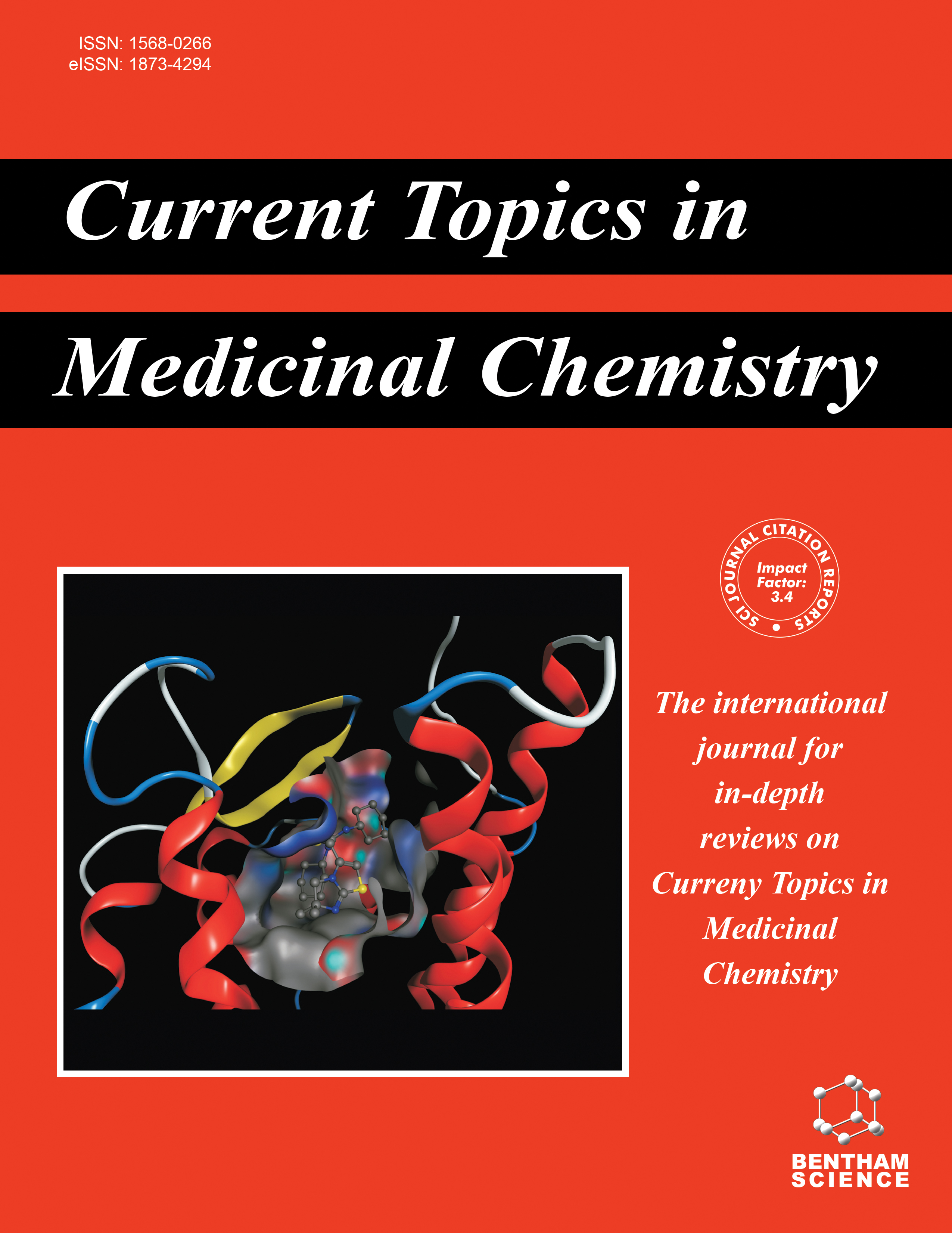- Home
- A-Z Publications
- Current Topics in Medicinal Chemistry
- Previous Issues
- Volume 24, Issue 28, 2024
Current Topics in Medicinal Chemistry - Volume 24, Issue 28, 2024
Volume 24, Issue 28, 2024
-
-
Tackling Neuroinflammation in Cognitive Disorders with Single-targeted and Multi-targeted Histamine H3 Receptor Modulators
More LessAuthors: Flávia Barrio Lopes, João Paulo S. Fernandes and Elisa UliassiNeuroinflammation is a process involved in a variety of central nervous system (CNS) diseases and is being increasingly recognized as a key mediator of cognitive impairments. Neuroinflammatory responses including glial activation, increased production of proinflammatory cytokines, and aberrant neuronal signaling, contribute to cognitive dysfunctions. Histamine is a key peripheral inflammatory mediator, but plays an Read More
-
-
-
The Current Landscape in the Development of Small-molecule Modulators Targeting Sphingosine-1-phosphate Receptors to Treat Neurodegenerative Diseases
More LessSphingosine 1-phosphate (S1P) is extensively researched as a lysophospholipid and is crucial in various physiological and pathological processes. It achieves this via signalling through five different subtypes of G protein-coupled receptors (GPCRs), namely S1PR1 to S1PR5. S1PR modulators possess the ability to traverse the blood-brain barrier, potentially leading to direct actions within the Central Nervous System (CNS). S1P Read More
-
-
-
Recent Molecular Targets and their Ligands for the Treatment of Alzheimer Disease
More LessAuthors: Gülşah Bayraktar and Vildan AlptüzünAlzheimer’s disease is a multifaceted neurodegenerative disease. Cholinergic dysfunction, amyloid β toxicity, tauopathies, oxidative stress, neuroinflammation are among the main pathologies of the disease. Ligands targeting more than one pathology, multi-target directed ligands, attract attention in the recent years to tackle Alzheimer’s disease. In this review, we aimed to cover different biochemical pathways, tha Read More
-
-
-
The Multitarget Action of Vitamins in the Ischemic Stroke
More LessAuthors: Luciana Scotti, Pablo Rayff da Silva, Alex France M. Monteiro, Rodrigo Santos Aquino de Araújo, Vanessa Lima do Nascimento, Kadja Luana Chagas Monteiro, Thiago Mendonça de Aquino, Wadja Feitosa dos Santos Silva, Edeildo Ferreira da Silva Junior, Marcus T. Scotti and Francisco Jaime Bezerra Mendonça JuniorA stroke, also known as a cerebral hemorrhage, occurs when there is an interruption in the blood supply to a part of the brain, resulting in damage to brain cells. This issue is one of the leading causes of death in developed countries, currently killing about 5 million people annually. Individuals who survive ischemic stroke often face serious vision problems, paralysis, dementia, and other sequelae. The numerous efforts to preve Read More
-
-
-
PIM Kinase Inhibitors as Novel Promising Therapeutic Scaffolds in Cancer Therapy
More LessAuthors: Dipanjan Karati, Ankur Saha, Souvik Roy and Swarupananda MukherjeeCancer involves the uncontrolled, abnormal growth of cells and affects other tissues. Kinase has an impact on proliferating the cells and causing cancer. For the purpose of treating cancer, PIM kinase is a potential target. The pro-viral Integration site for moloney murine leukaemia virus (PIM) kinases is responsible for the tumorigenesis, by phosphorylating the proteins that control the cell cycle and cell proliferation. PIM-1, PIM- Read More
-
Volumes & issues
-
Volume 25 (2025)
-
Volume 24 (2024)
-
Volume 23 (2023)
-
Volume 22 (2022)
-
Volume 21 (2021)
-
Volume 20 (2020)
-
Volume 19 (2019)
-
Volume 18 (2018)
-
Volume 17 (2017)
-
Volume 16 (2016)
-
Volume 15 (2015)
-
Volume 14 (2014)
-
Volume 13 (2013)
-
Volume 12 (2012)
-
Volume 11 (2011)
-
Volume 10 (2010)
-
Volume 9 (2009)
-
Volume 8 (2008)
-
Volume 7 (2007)
-
Volume 6 (2006)
-
Volume 5 (2005)
-
Volume 4 (2004)
-
Volume 3 (2003)
-
Volume 2 (2002)
-
Volume 1 (2001)
Most Read This Month
Article
content/journals/ctmc
Journal
10
5
false
en


